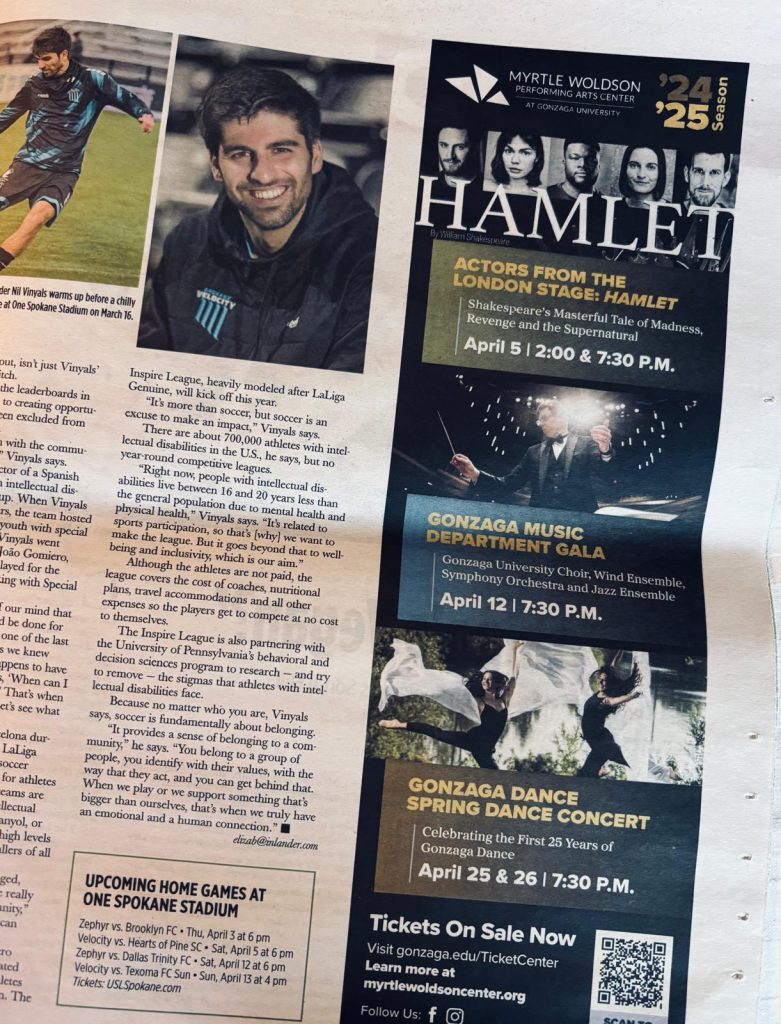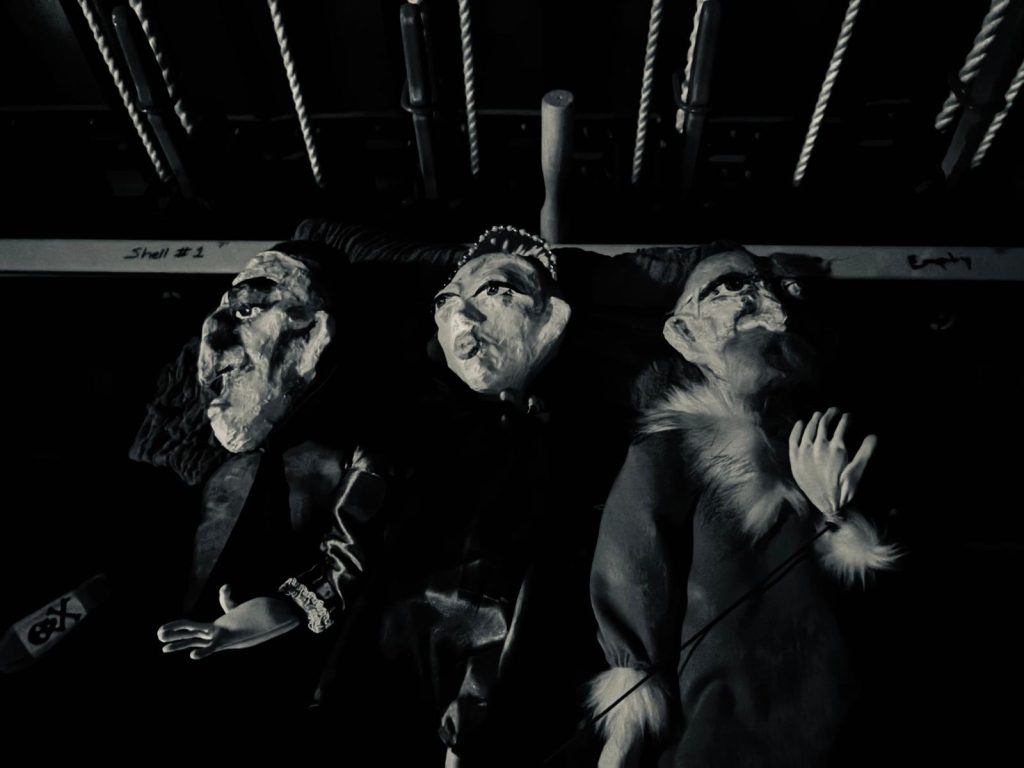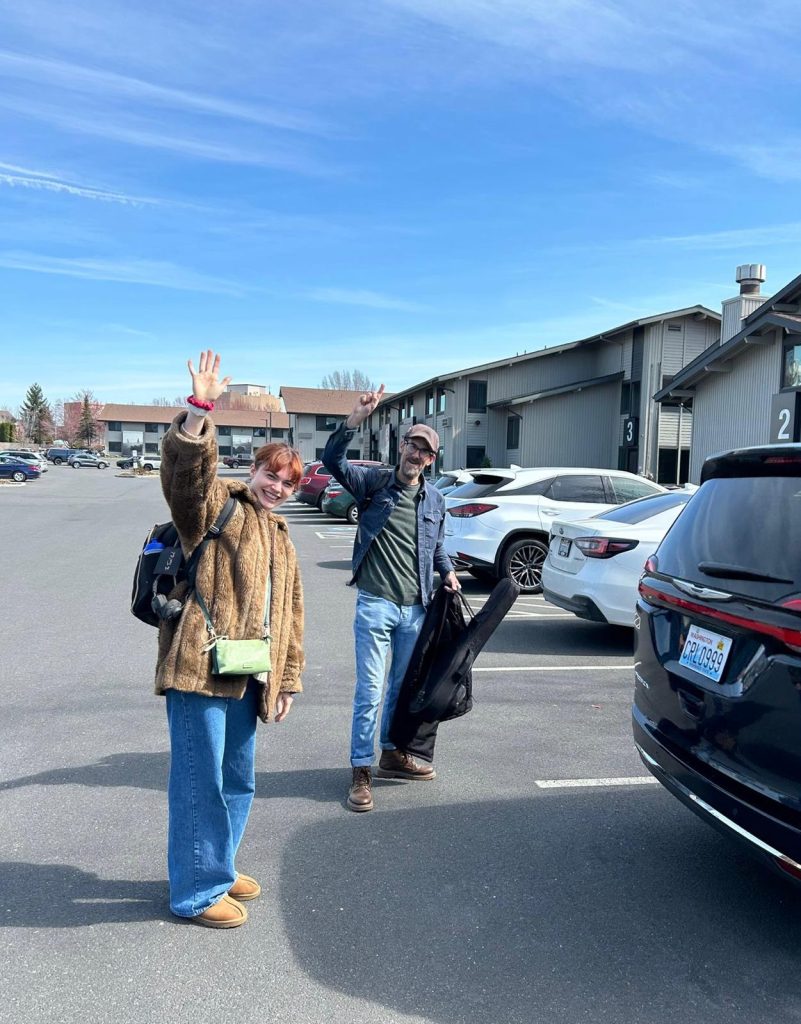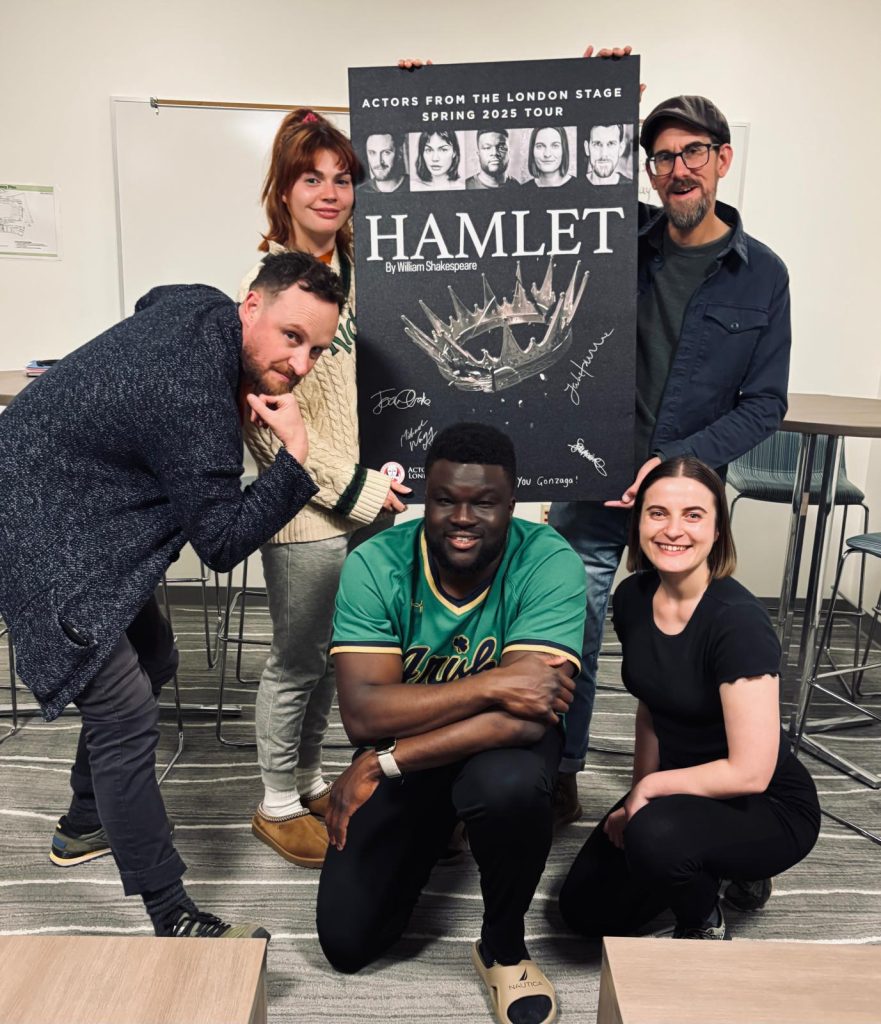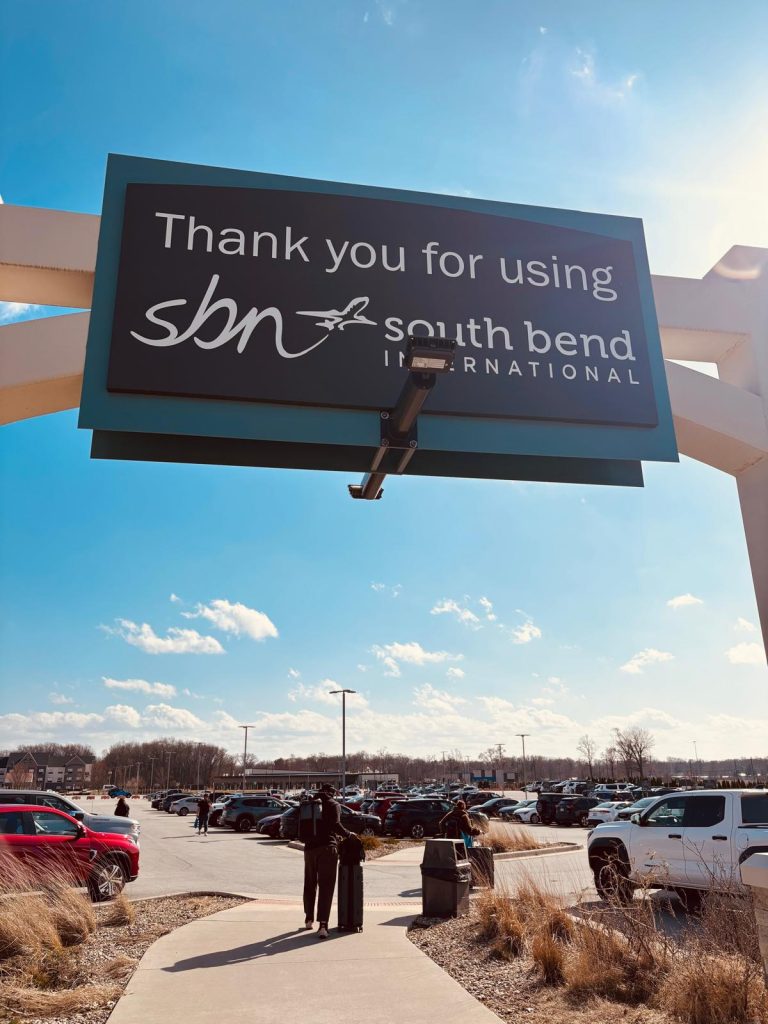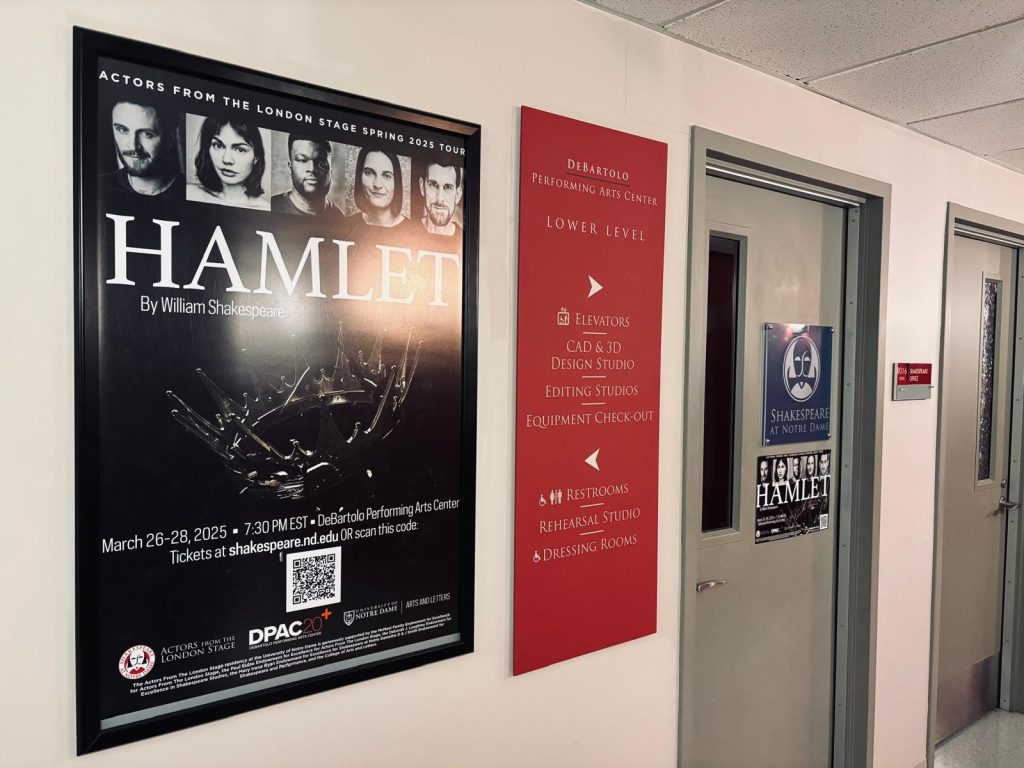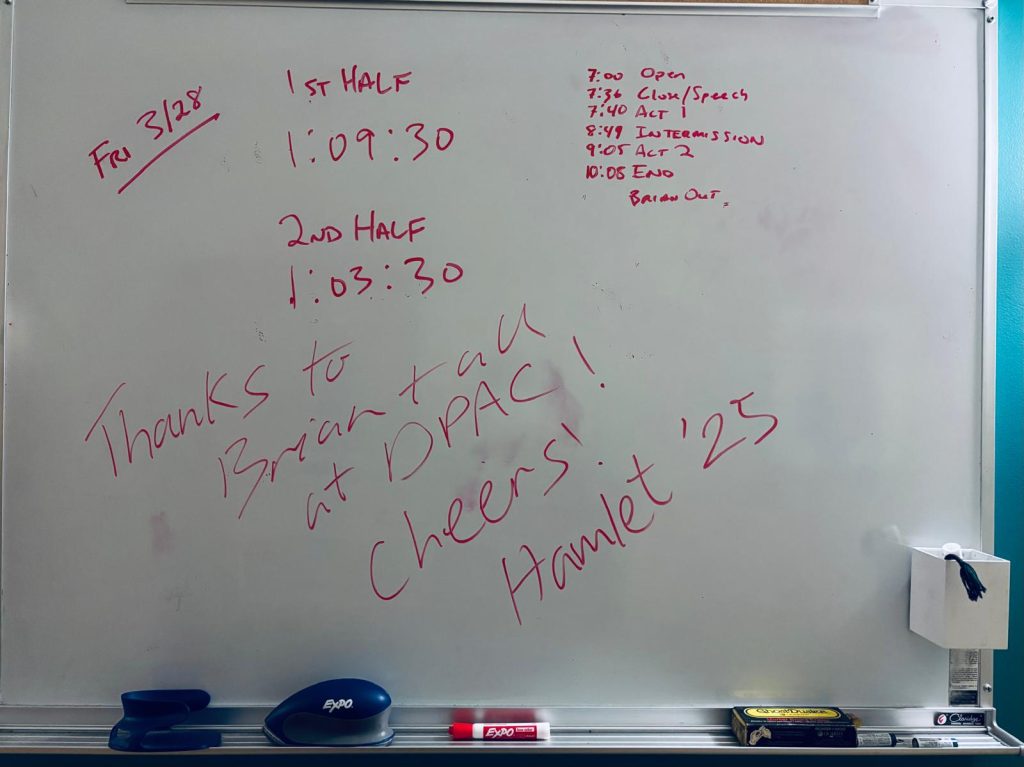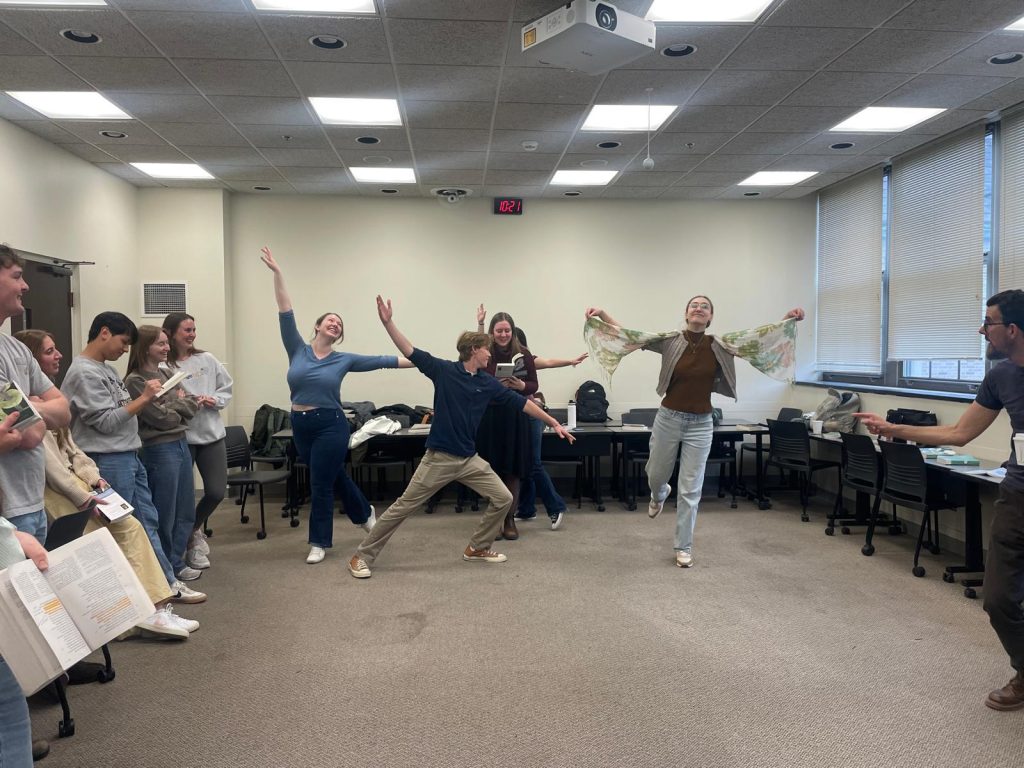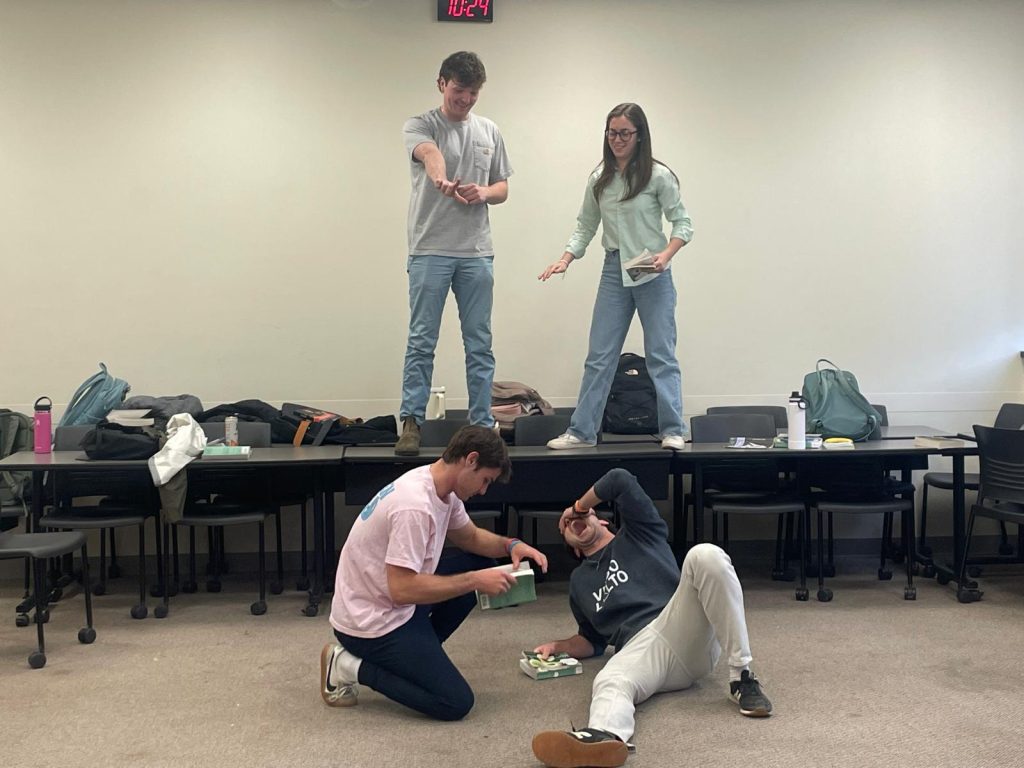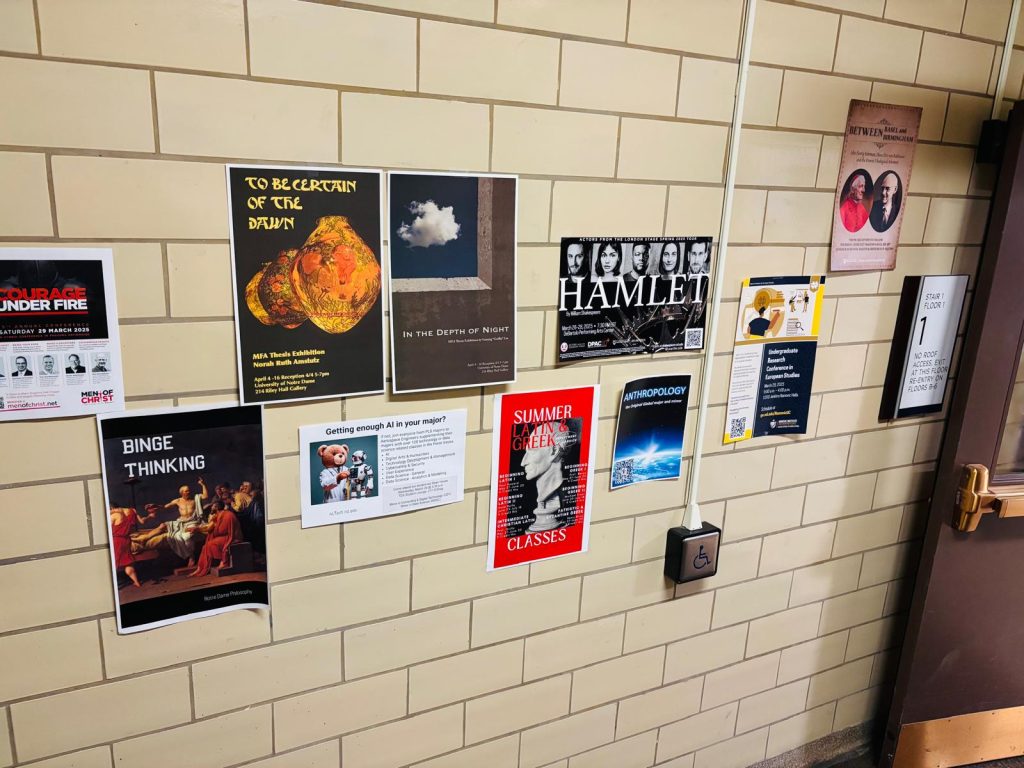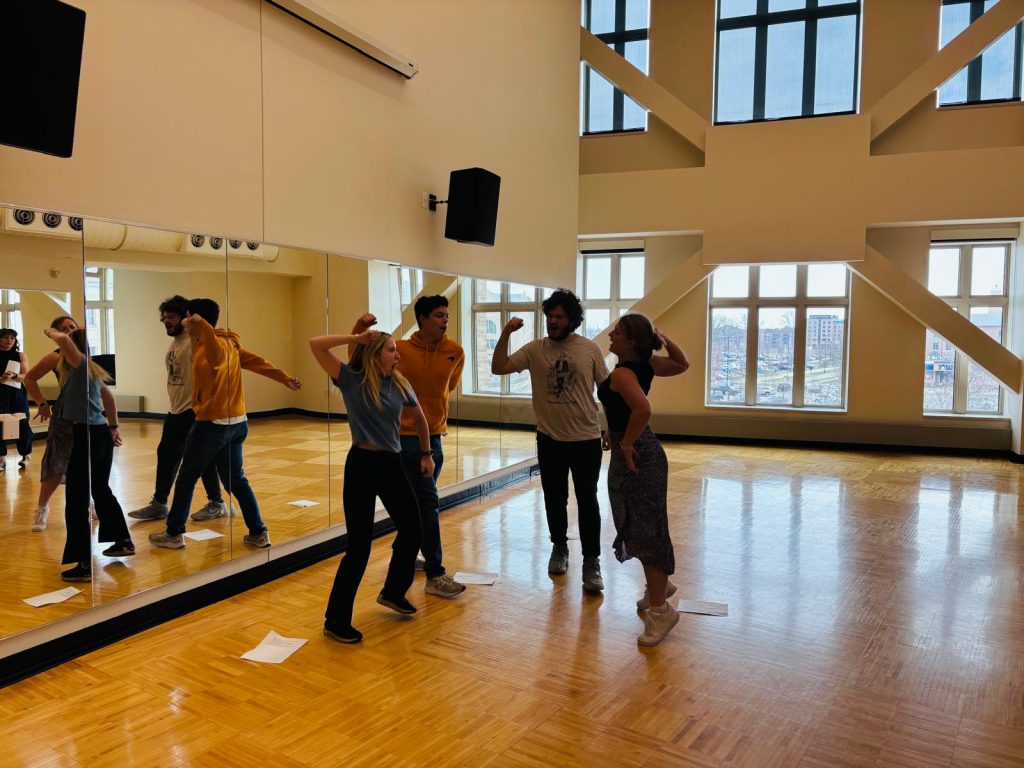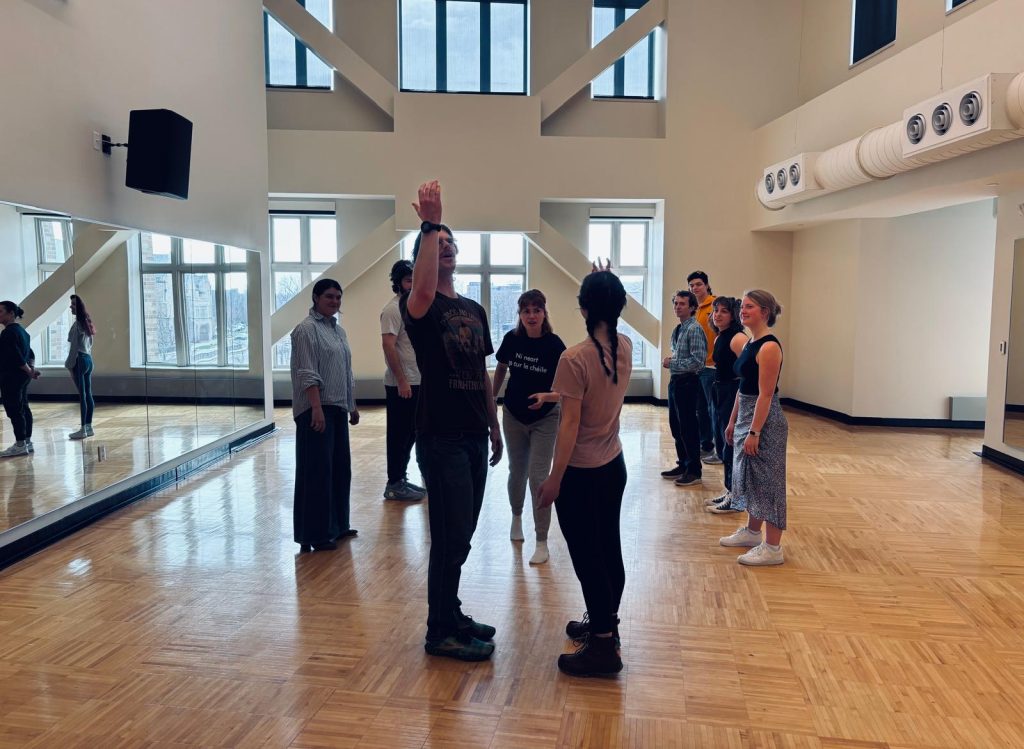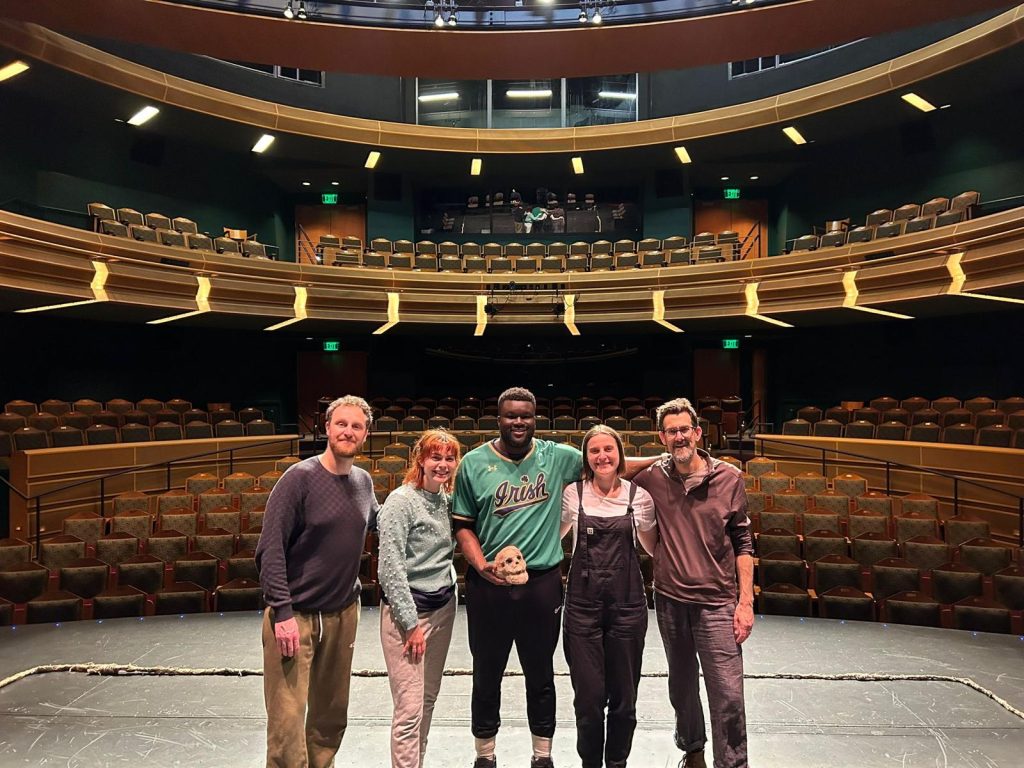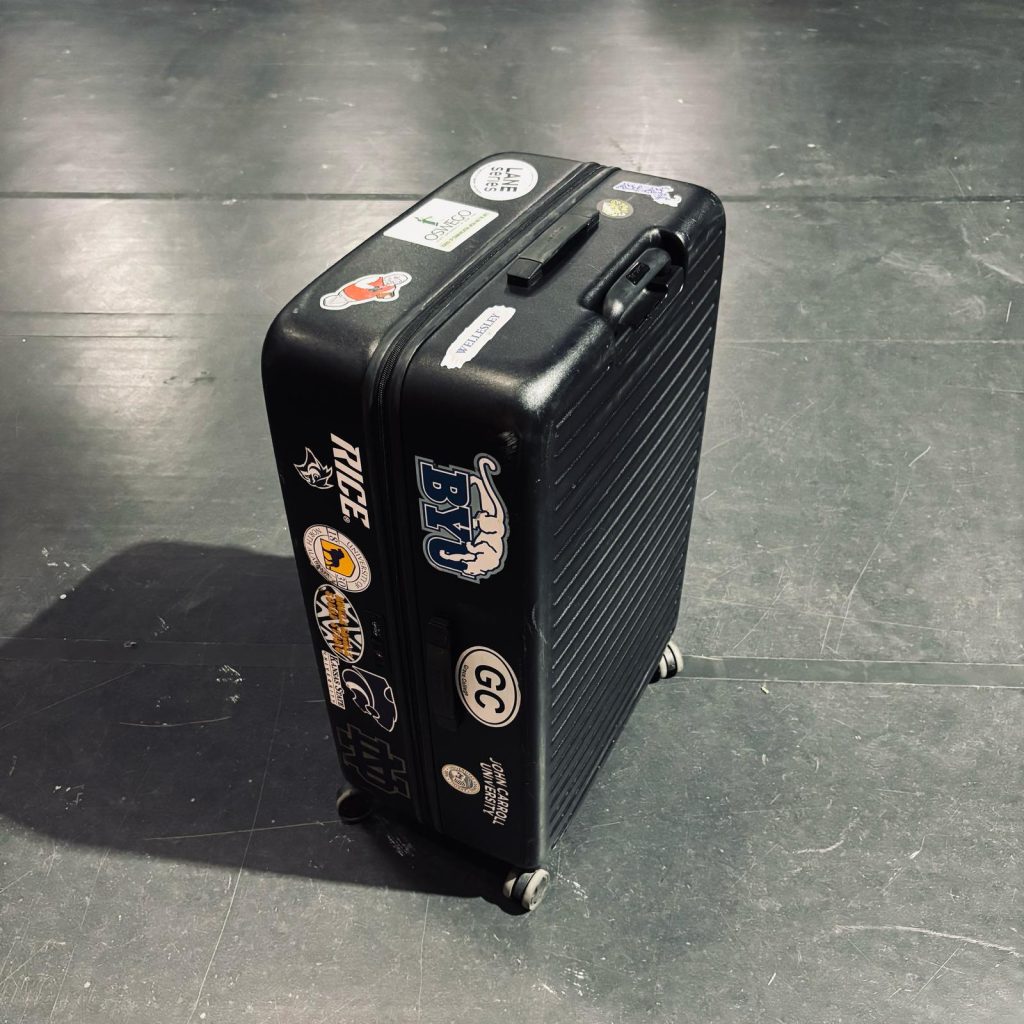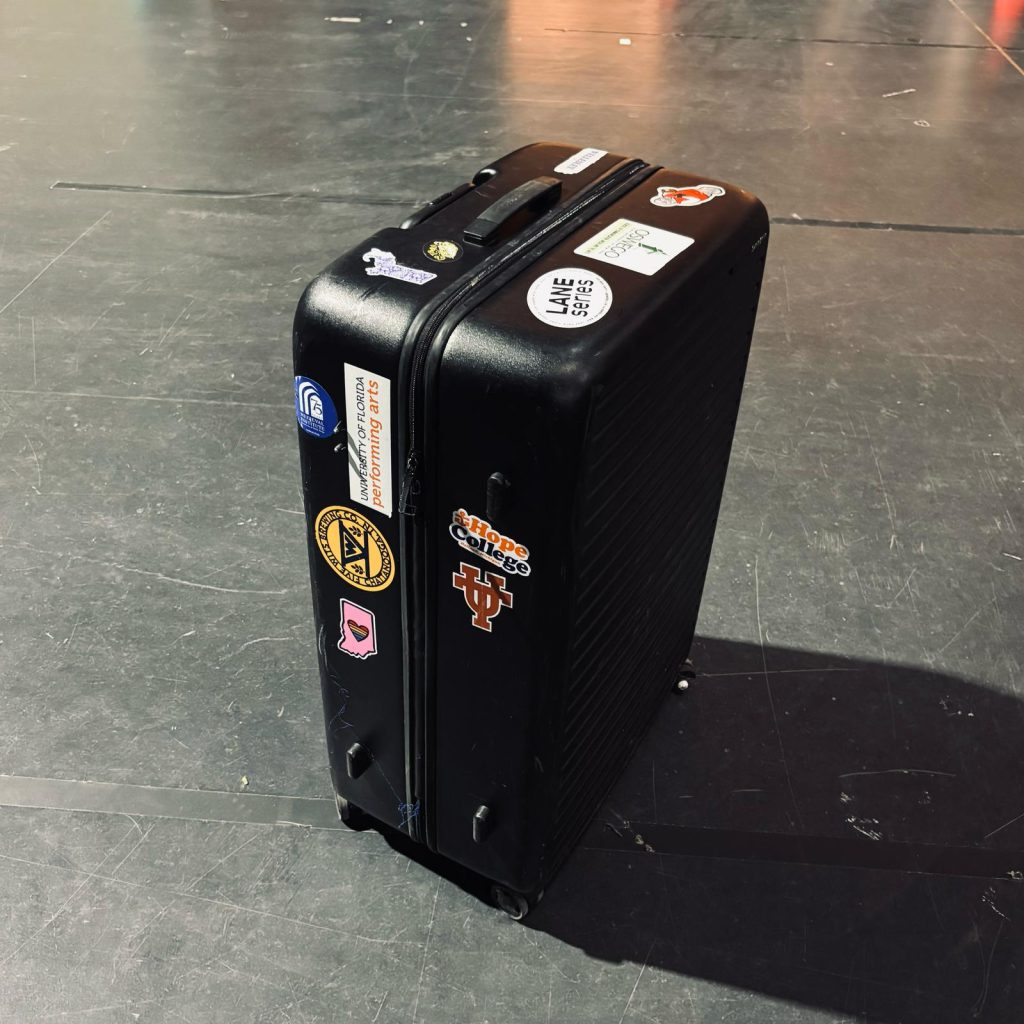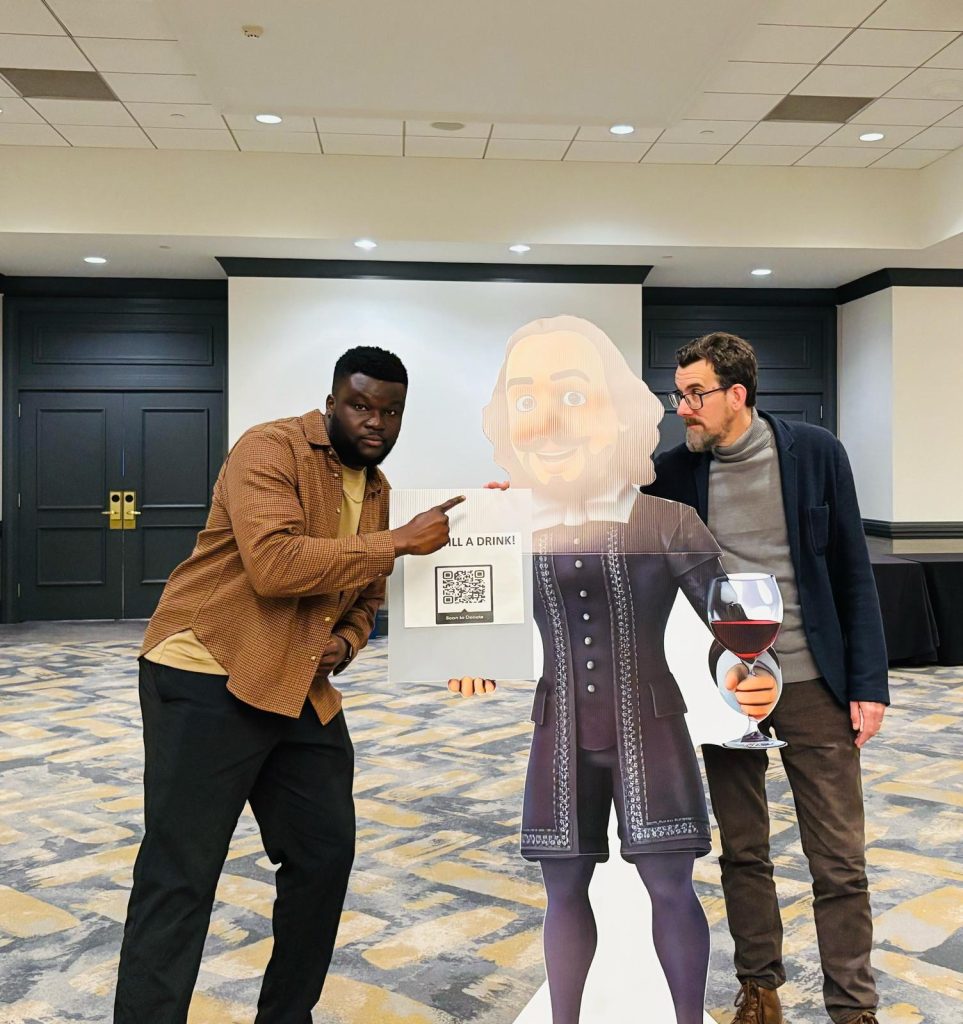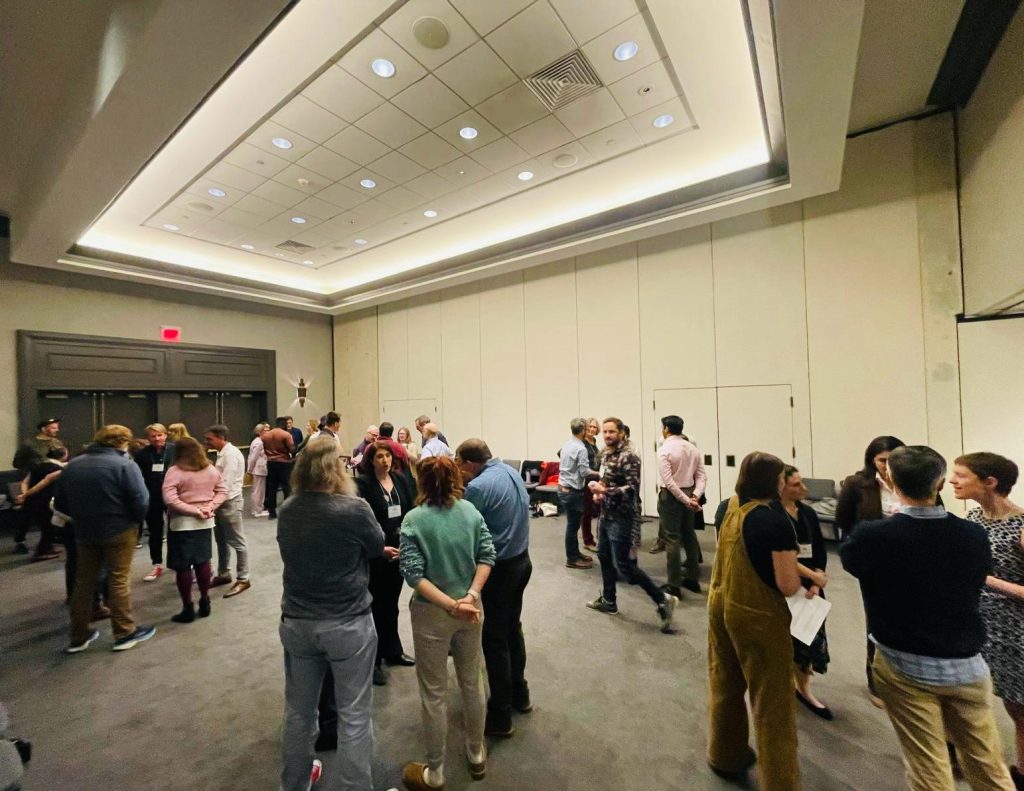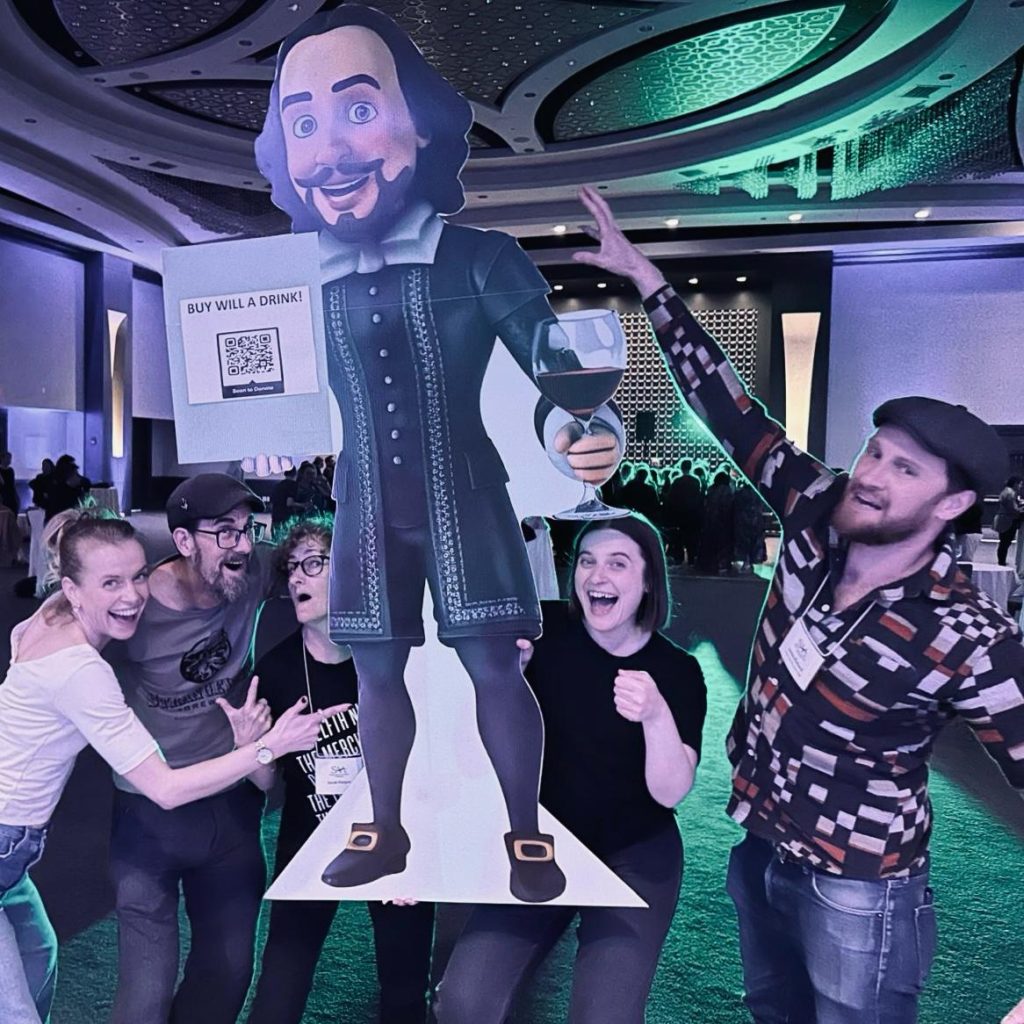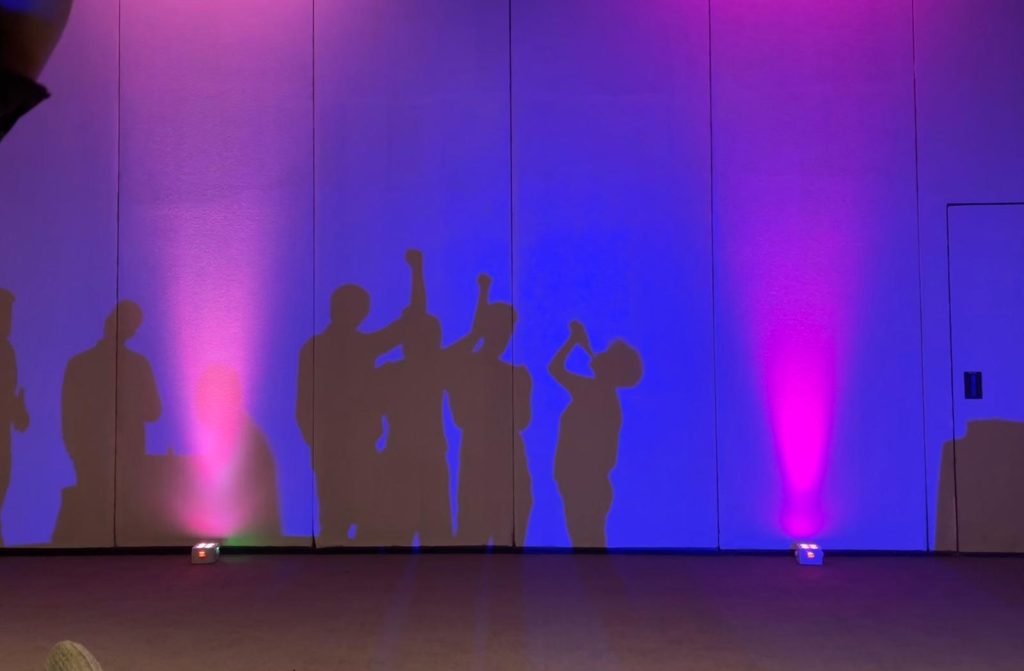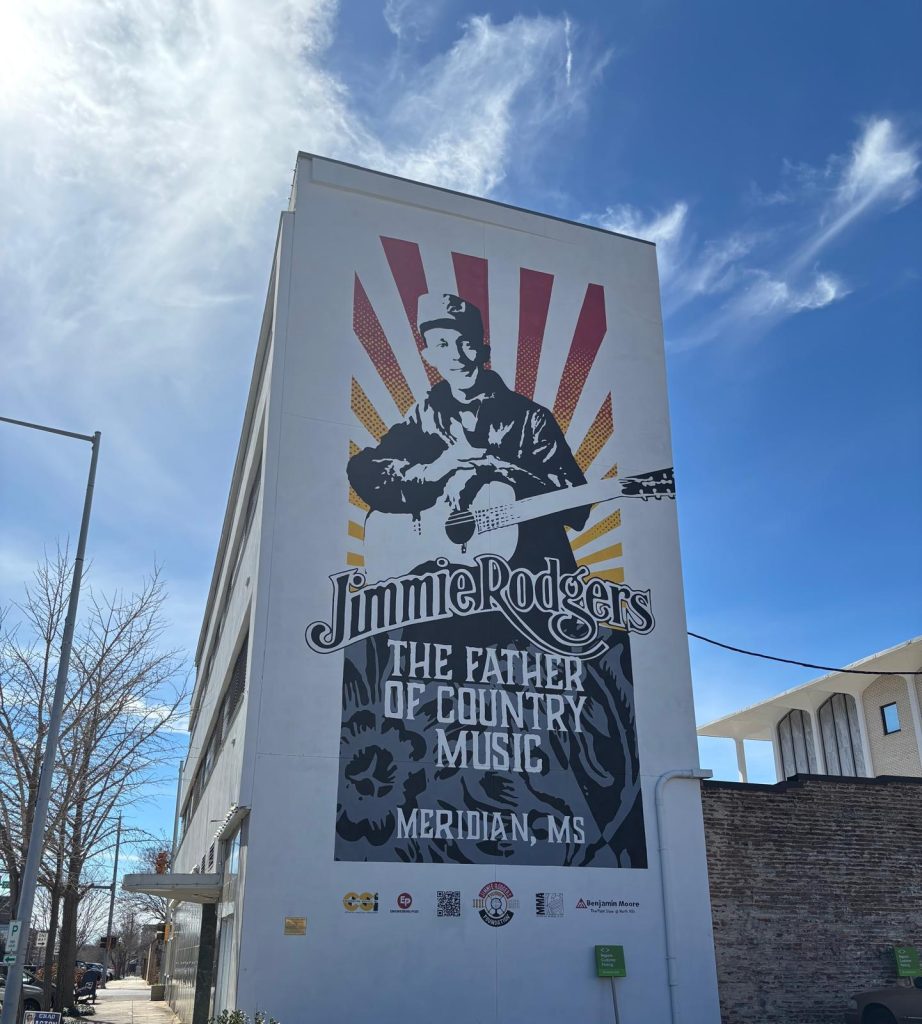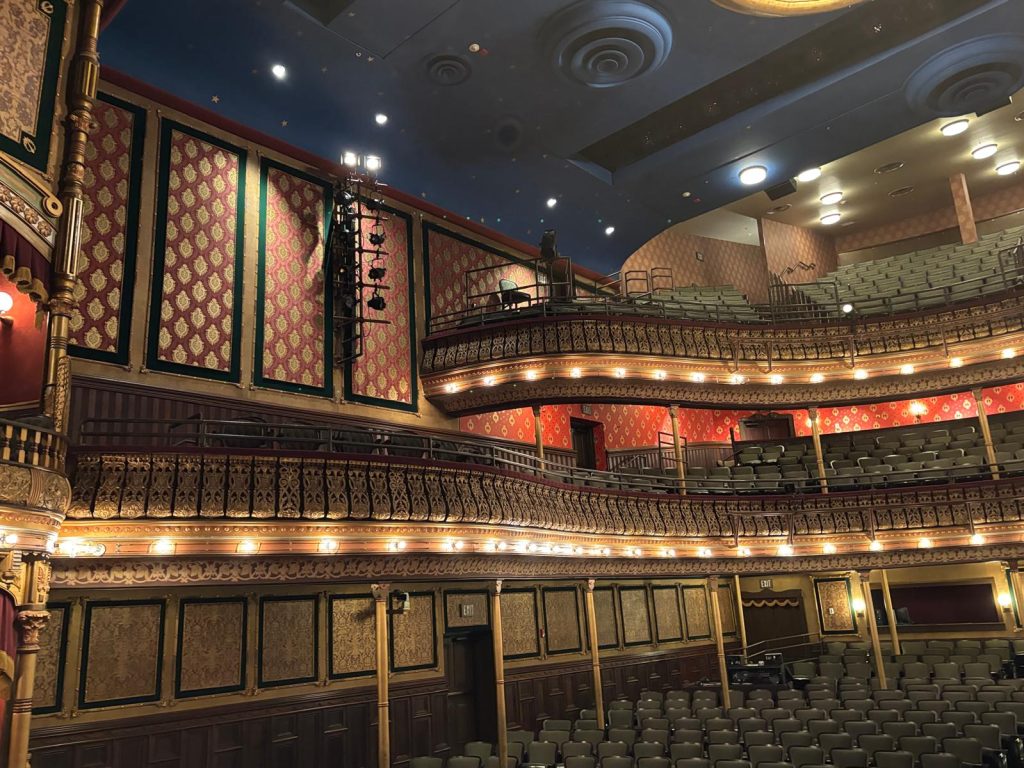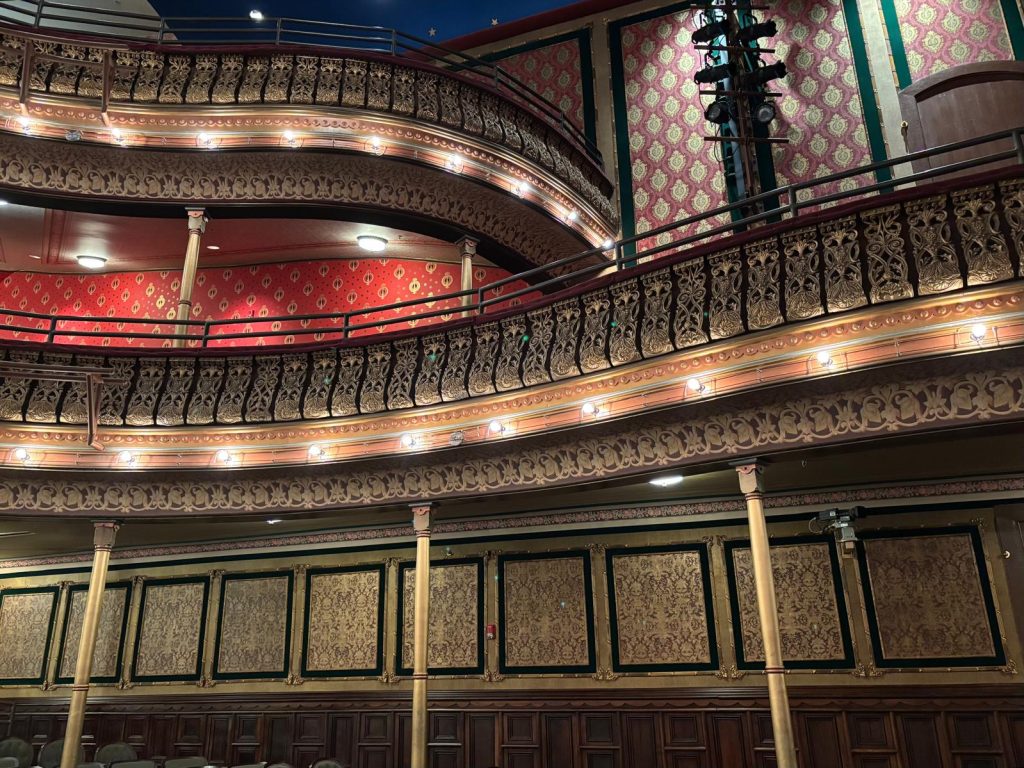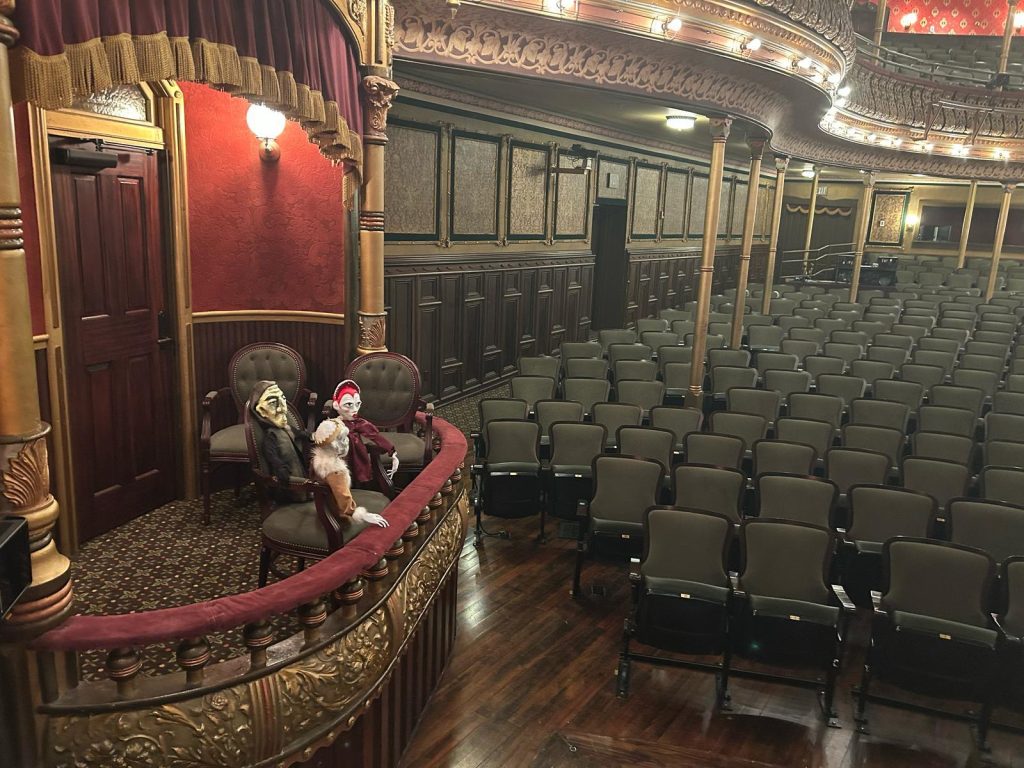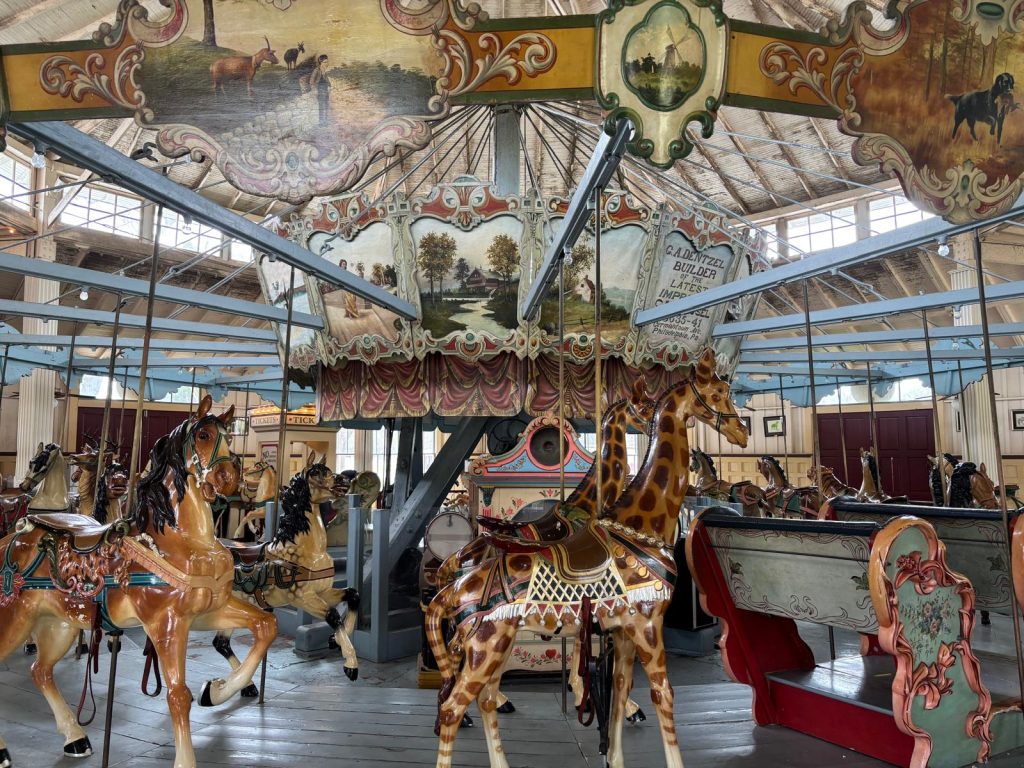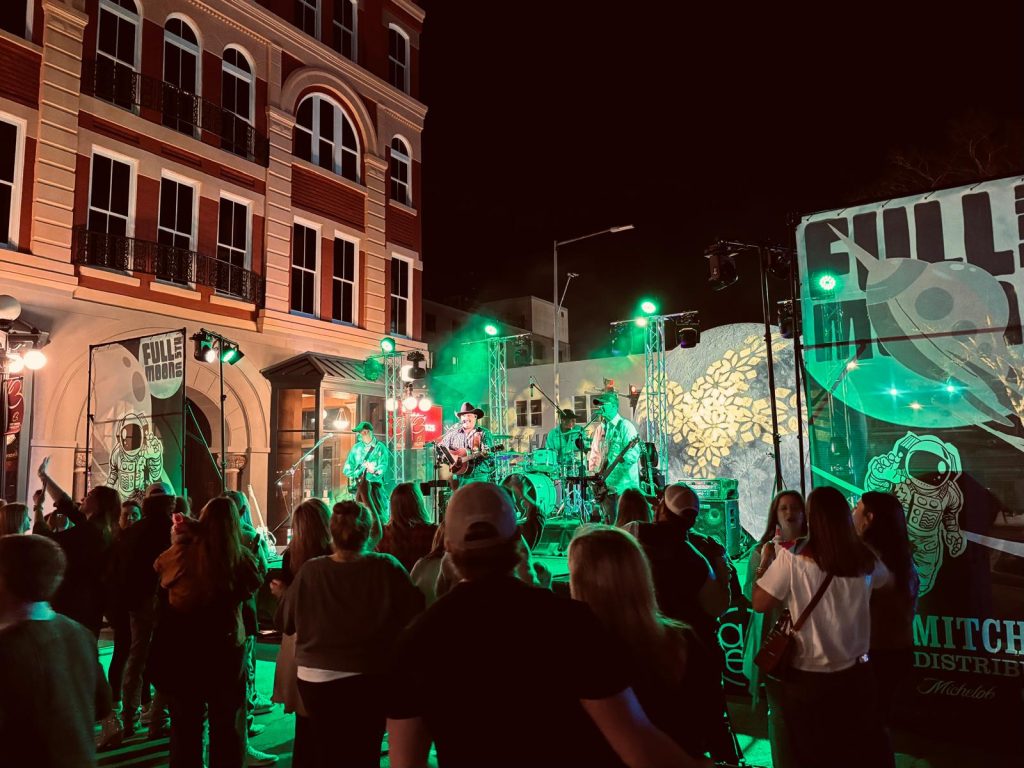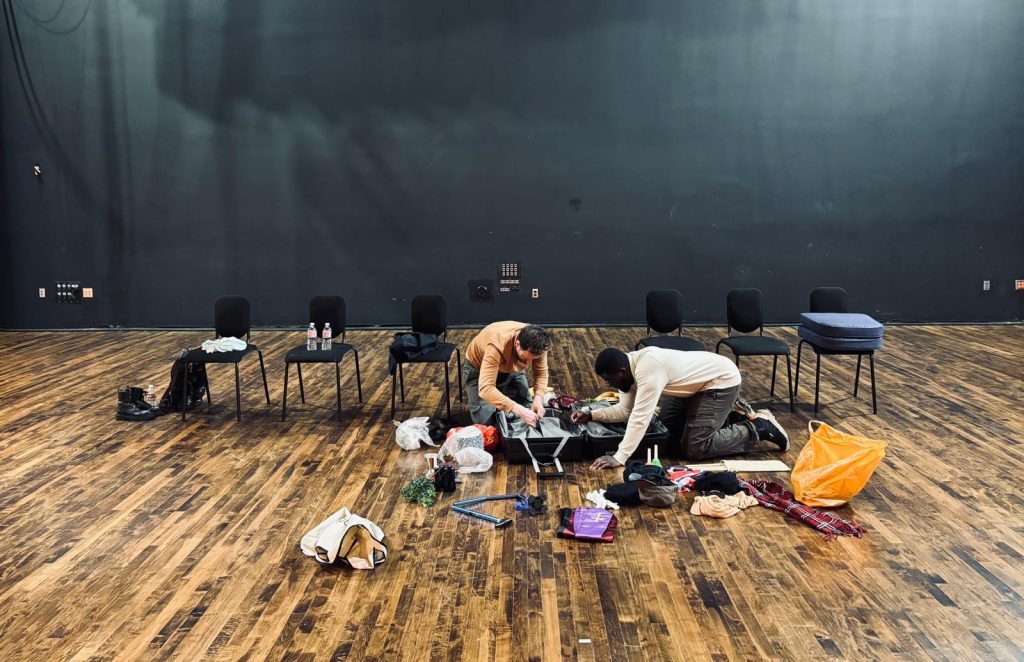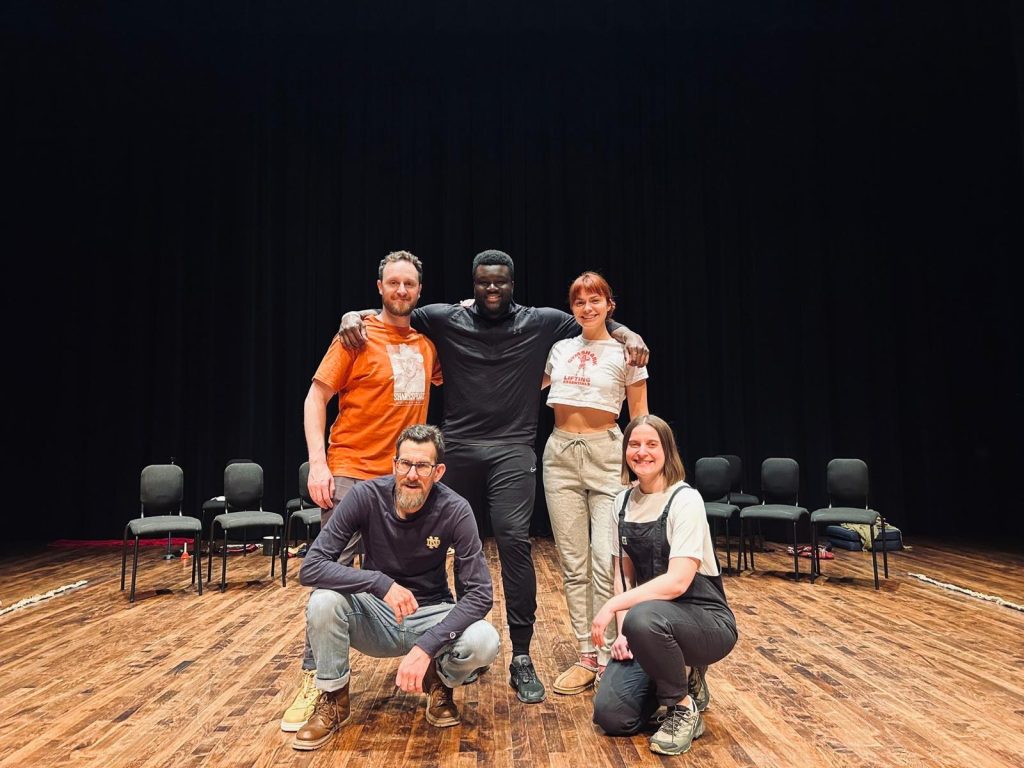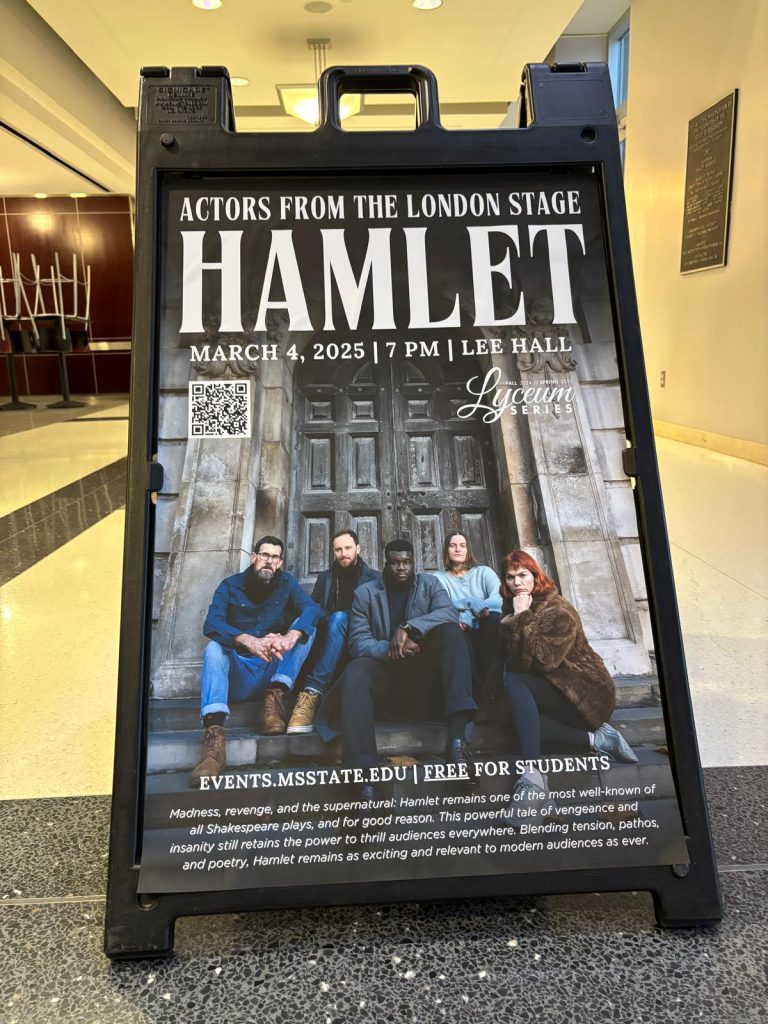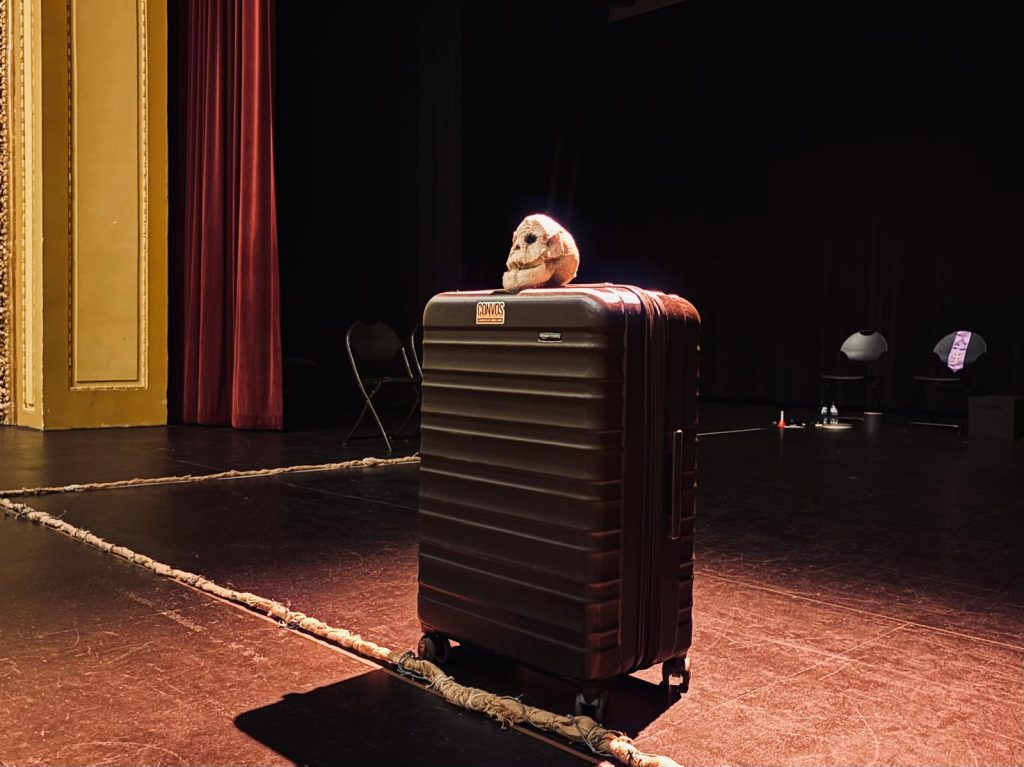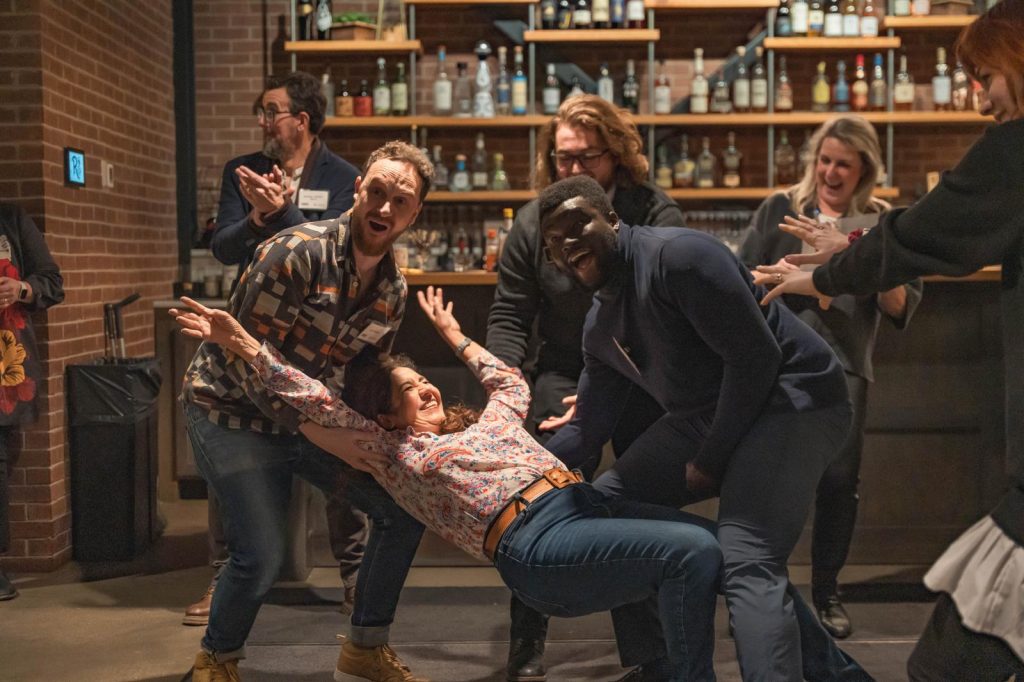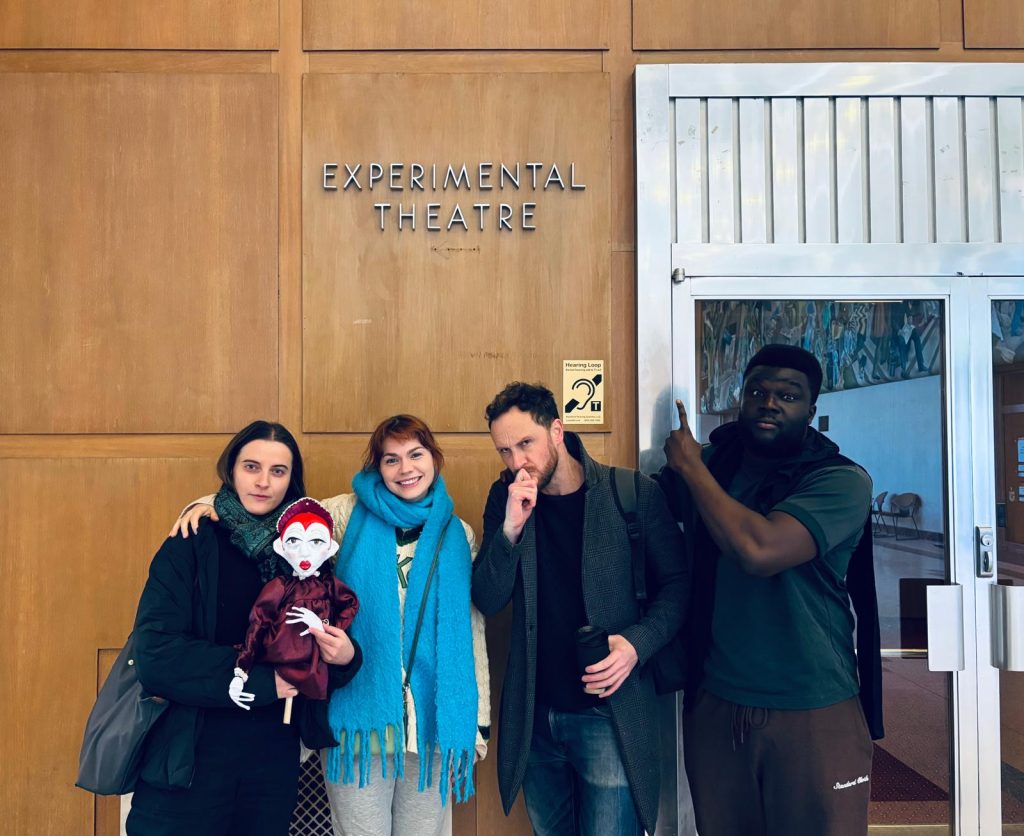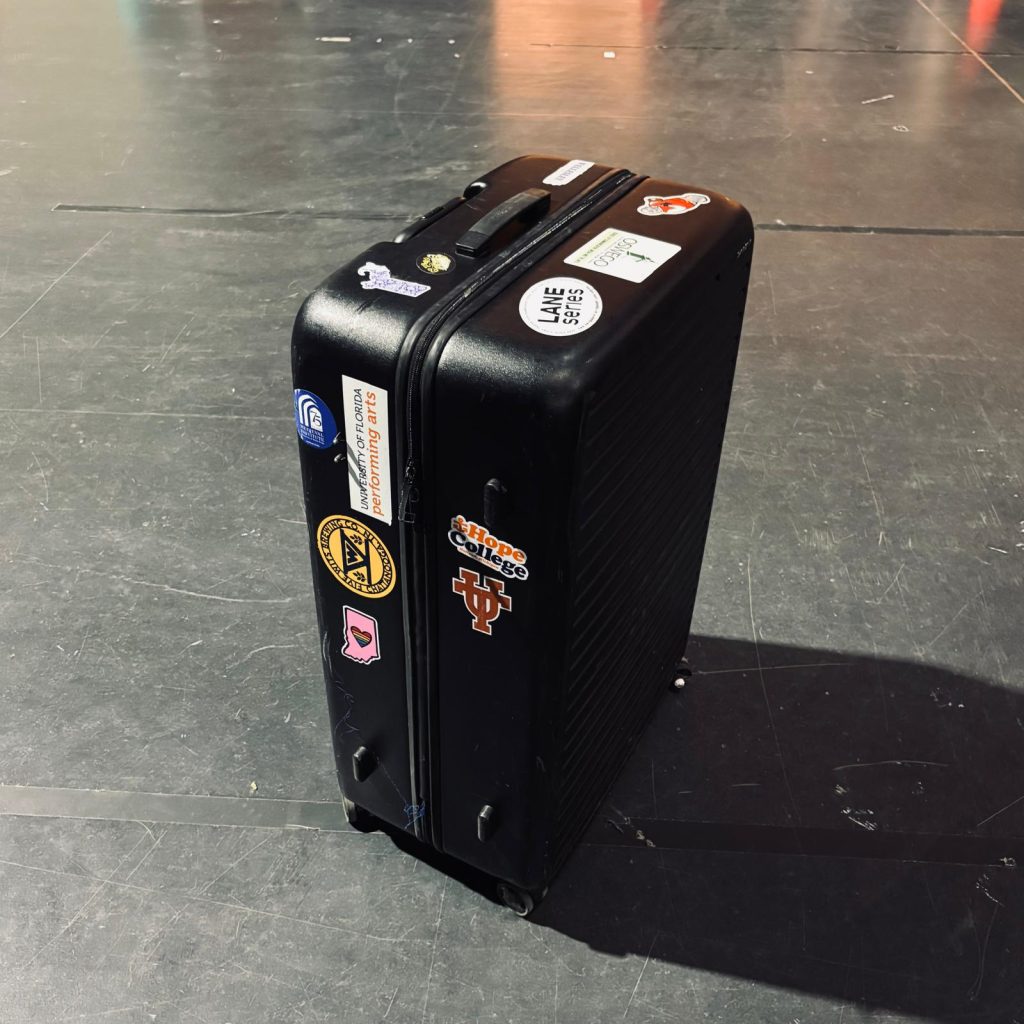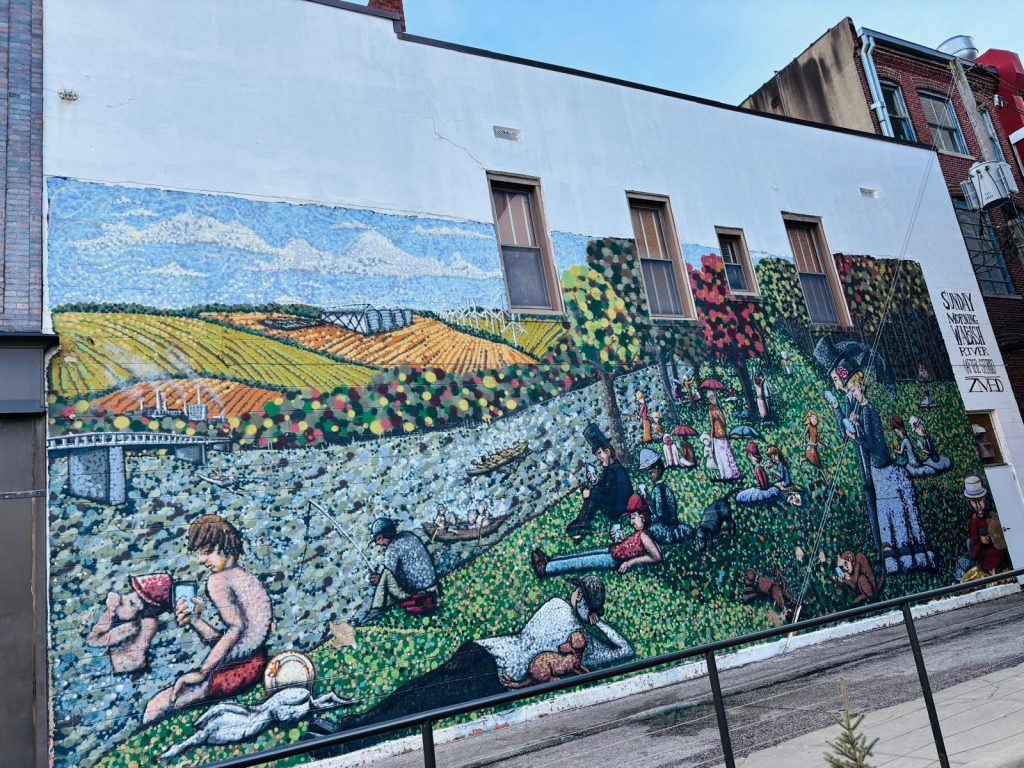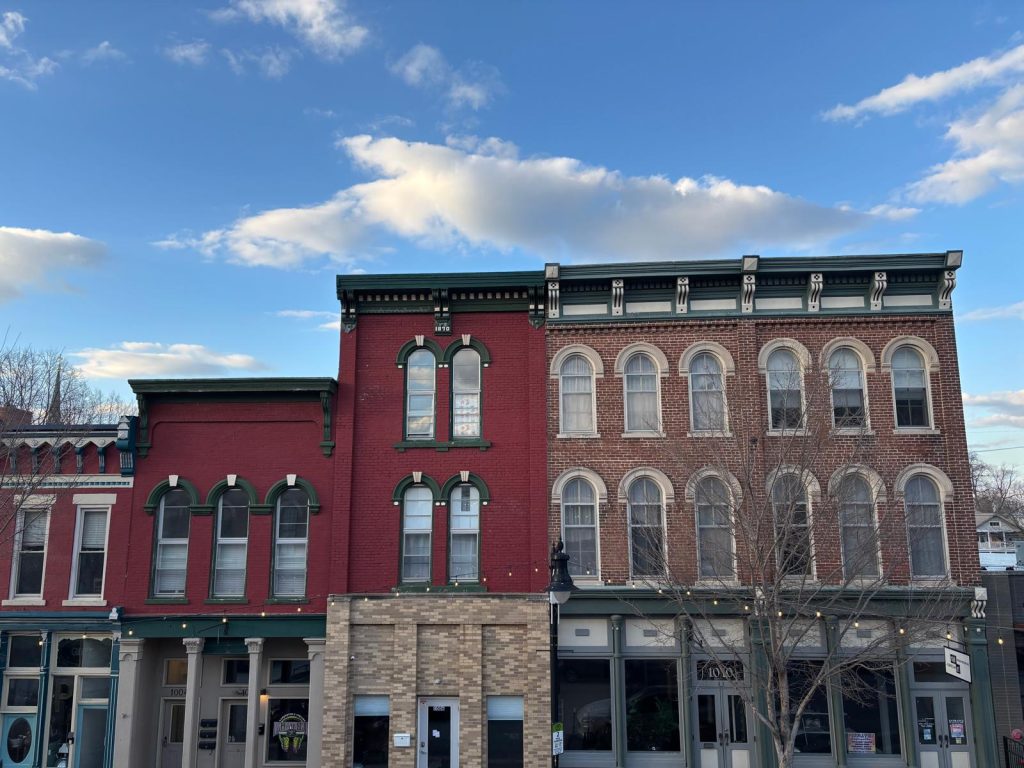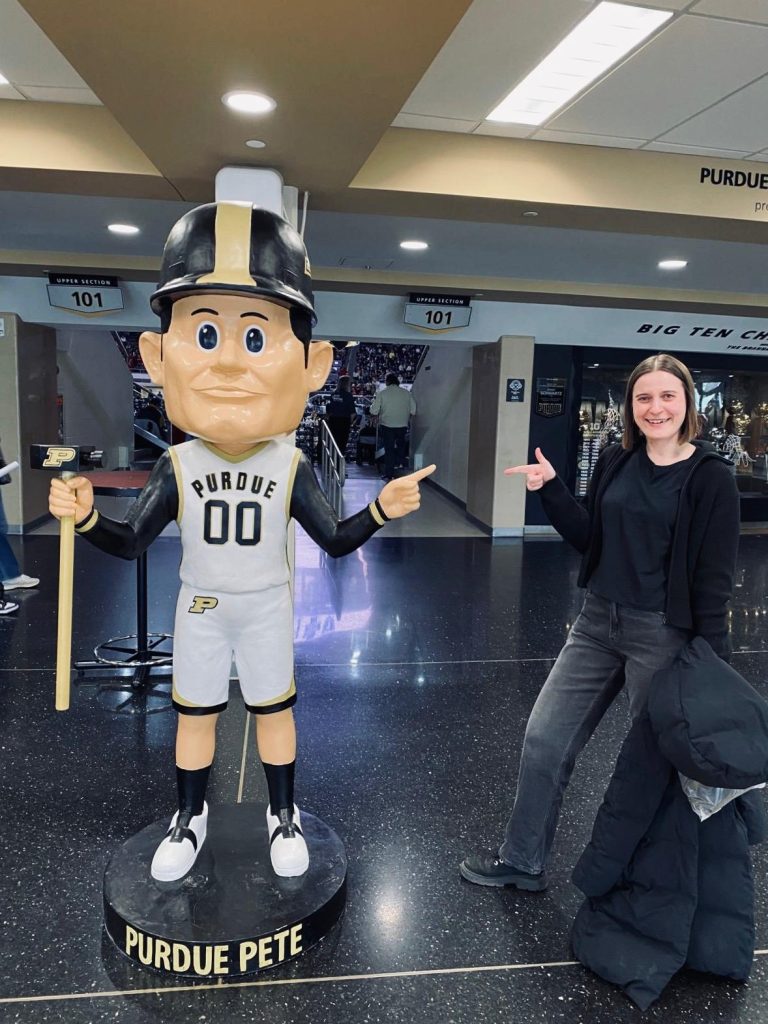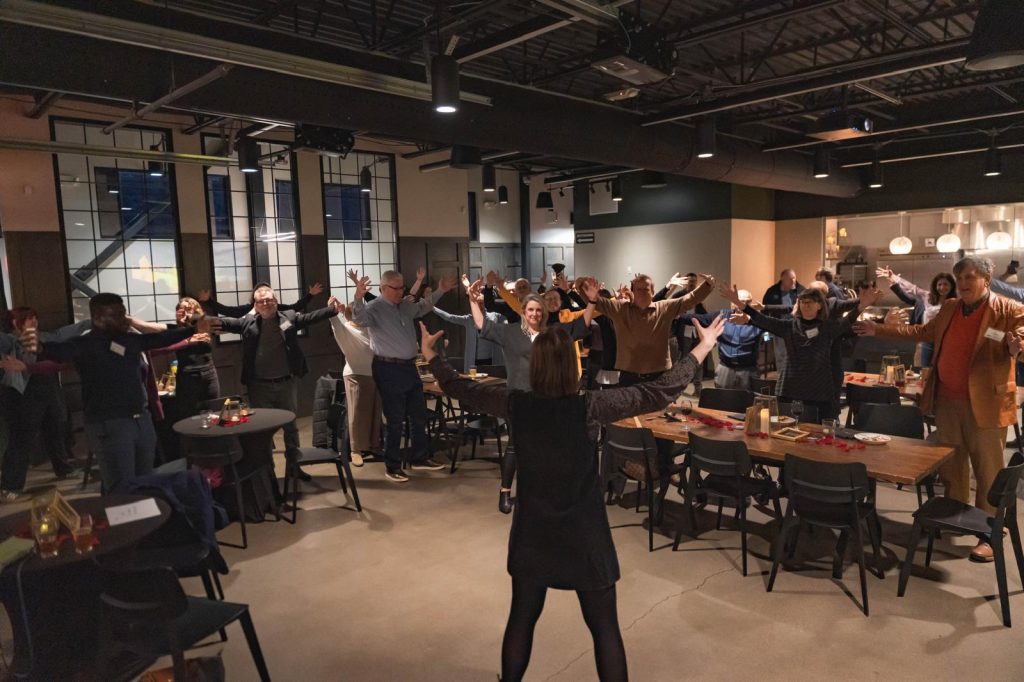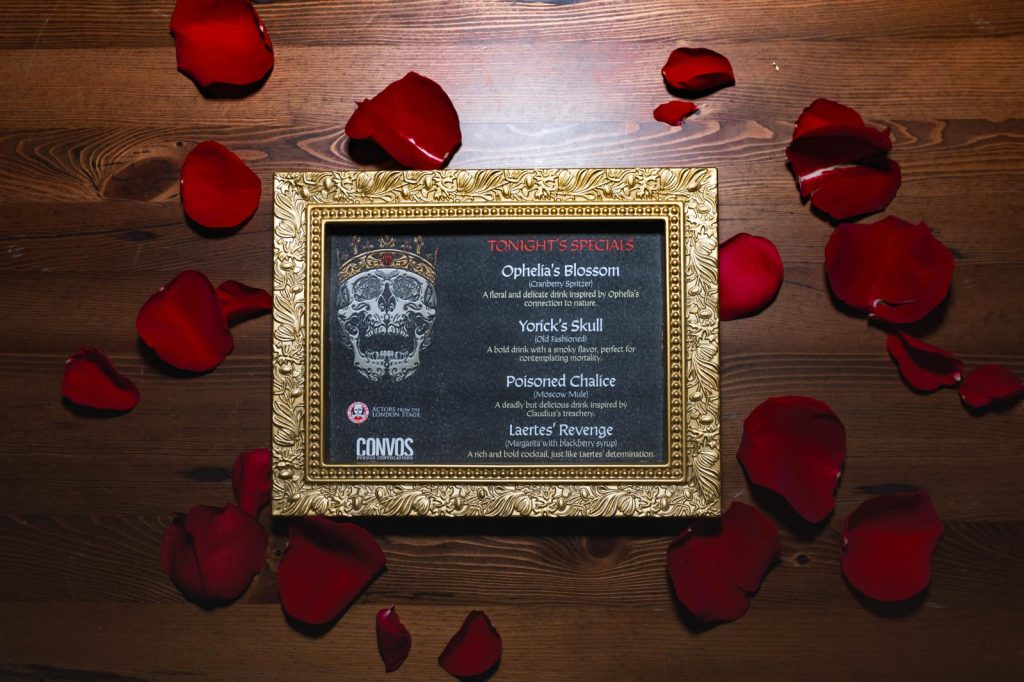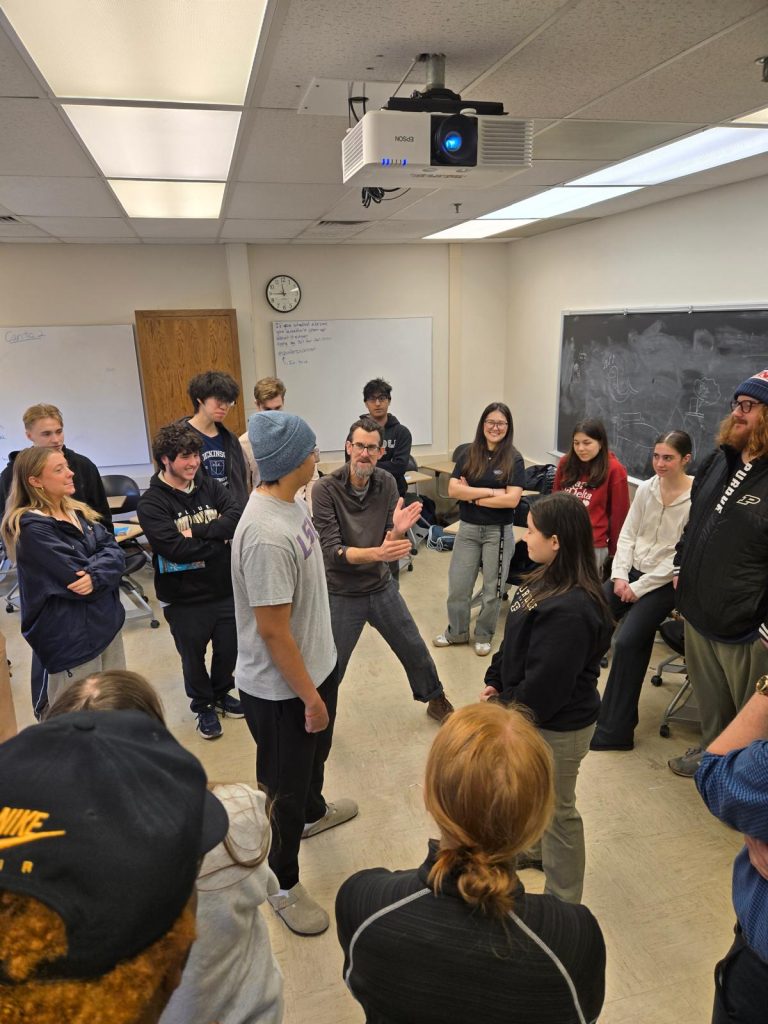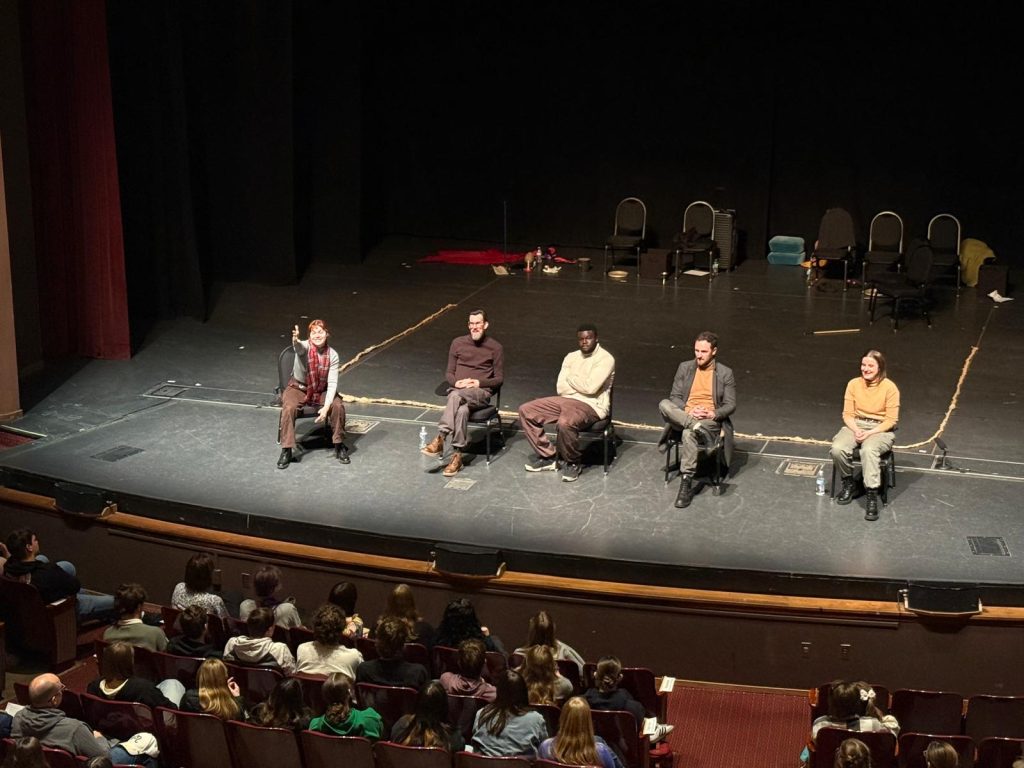By Michael Wagg
Journey’s end. And it ended in triumph. In more ways than one. Firstly, with a great week here at Gonzaga University in Spokane, Washington state. It’s the first time AFTLS has worked here and we’re sure it won’t be the last, after lovely, lively workshops at both the university and a local high school, as well as two well-received shows at the excellent, and startlingly clean, Myrtle Woldson Performing Arts Center. The theatre’s a stone’s throw from the house where Bing Crosby grew up, now part of the Gonzaga campus, so we were Swinging on a Star for the final throws of the tour not least at the prospect of bubbles in the fridge for afters, courtesy of our kind hosts here.
Bing studied Law at Gonzaga, before packing his drums into the back of a pickup and heading to LA and the big time; while our Jack declared his class with students at the Law School this week the best of the tour. If only we’d been here a century ago, he might have encouraged a young Bingo to throw some verse around the courtroom and changed the course of showbiz history.



Jack’s declaration signaled the time for our end of tour awards – a lively, at times fierce debate over cocktails in the Ruby River Hotel to determine our favourites in various key categories. In fact, the Ruby River Hotel took top spot on accommodation, thanks to an excellent breakfast (picking up that prize too), riverside location, extensive happy hour and hot tub to boot.
Honourable mentions in other areas went to the Grand Opera House in Meridian, Mississippi – an absolute stunner. To The Boxcar bar on the roof of the Threefoot Hotel, also in Meridian; to the swimming pool at the Sheraton Hotel, Boston (much to my umbrage, as a fan of the warm waters of the Garden Inn, Williamsburg, Virginia); and to the many breweries of Holland, Michigan. On a side note, I’ve taken the brewery research seriously and clocked up a half-century on Untapped beer app.

We’ve met many top people along this road and are grateful for all their kindness and expertise. But special plaudits went to our colleagues at the University of Notre Dame (take a bow, Brian); similarly at Hope College and the Knickerbocker Theater in Holland; and to the students and faculty, particularly the brilliant Jean Feerick, at JCU in University Heights, Ohio.
Purdue University ranked highly for its students, teaching and producing staff, as well as its unique hotel (bowling in the basement; whiskey in the bar). Austin, Texas is a marvellous place and was never far from the top of our lists. While despite quiet weeks, both Willam & Mary in Williamsburg and Mississippi State in Starkville picked up tributes. But as we squabbled late into the night over more cocktails and chocolate cake (happy birthday, Jo!) we had to find a champion. It was nail bitingly close, went to a second-round count, as both Meridian and ND pushed it all the way. But ultimately we agreed, perhaps surprisingly, that this small city with a river running through it, complete with waterfalls, strangely beautiful 1970s structures, an abundance of brilliant breweries – and a hot tub! – steals it. Spokane rocks!



We took our awards seriously, as silly as they sound. They are, in fact, both. This touring life makes it so. And there was one more silly-serious issue to settle, and one more triumph to come. Between shows on Saturday, we sat down together for the ridiculously tense Great Pen Count. Yes, for the past ten weeks, four out of the five of us have been furiously and furtively collecting pens (Jo was the VAR). The rules were strict: the pen must be branded with the place where it was found; the player must have been to the place and have proof if necessary; the pen can’t have been bought; the pen must work! Here we are warming up for the count:
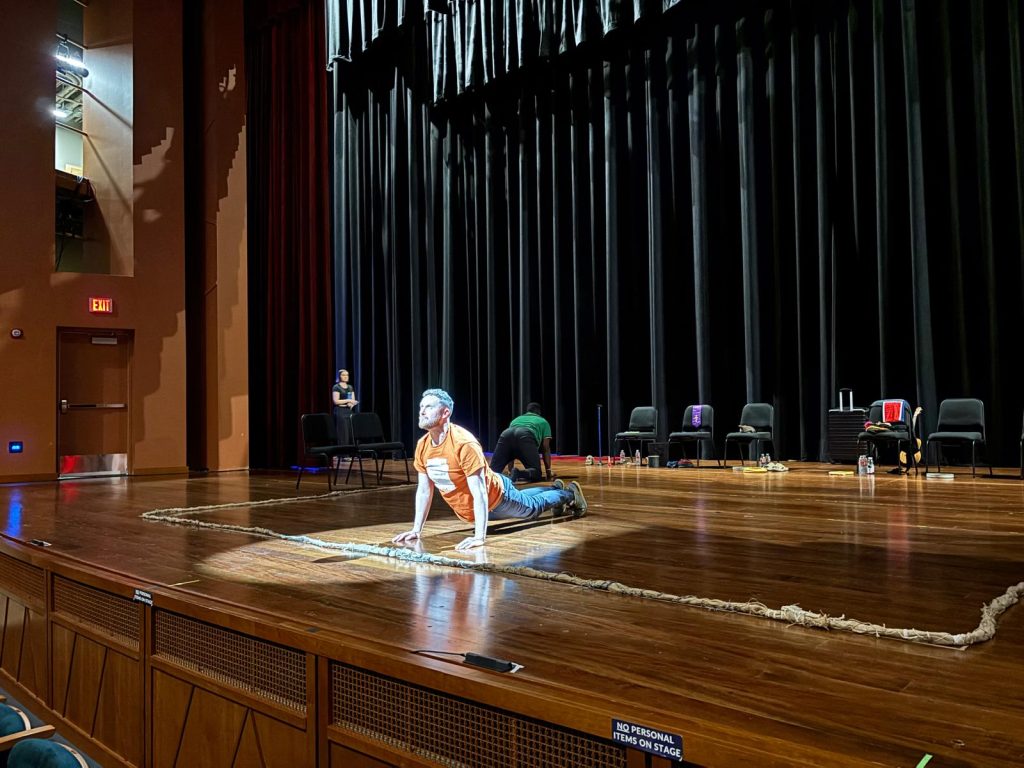
It was clear after our early reveals that this was going to be a close-run thing. Players panicked as they realised they’d mislaid significant pens, or they bemoaned the realisation of duplicates. As the credentials of each declared pen were debated passionately, a front runner emerged – only to have several entries disqualified late on for lack of ink. By the end of a fraught count there was just one pen in it. Breathless, the champion sank to his knees. I’d like to thank my wife, my mother and father, William Shakespeare, our cats Vince and Kenny… If I achieve nothing else in this winding, ink-stained life, they can never take from me the fact that I won the Pen Wars of Hamlet ‘25.



Joking aside, as we head west to Seattle, before back the other way and home, I would like to say some serious thanks. To our colleagues at AFTLS and Shakespeare at ND who make it all happen, against all the odds. Here’s to another 50 years, bellowing ‘Just Shakespeare’s work!’ And here’s to celebrating this remarkable company in London, at the Cockpit Theatre and Dulwich Hamlet. But most of all I’d like to thank four people: for this journey, five months in the making, the carrying and the playing of our Hamlet. It’s a pleasure to be part of this team. I’ve been round similar bends many times, but I can’t think of a better bunch to do it with.
Here’s to you: Esmonde Cole (Hamlet, Marcellus, Fortinbras, Pirate, Tech 2, social secretary, crack case packer); Joanna Clarke (Ophelia, Laertes, Guildenstern, Bernado, Player-Queen, Tech 1, history wayfinder, Bananagrams seeker); Sadie Pepperrell (Gertrude, Horatio, Rosencrantz, Player, Travel genius); Jim-Jack Whitam (Claudius, Ghost, Francisco, Captain, Player, fellow Gravedigger, Edu coach and theatre-maker to his very bones). Thank you, all. You are the best actors in the world, either for tragedy, comedy, history, pastoral, pastoral-comical, etc. Etc.
See you in London for more of the thing. The wind sits in the shoulder of your sail.
